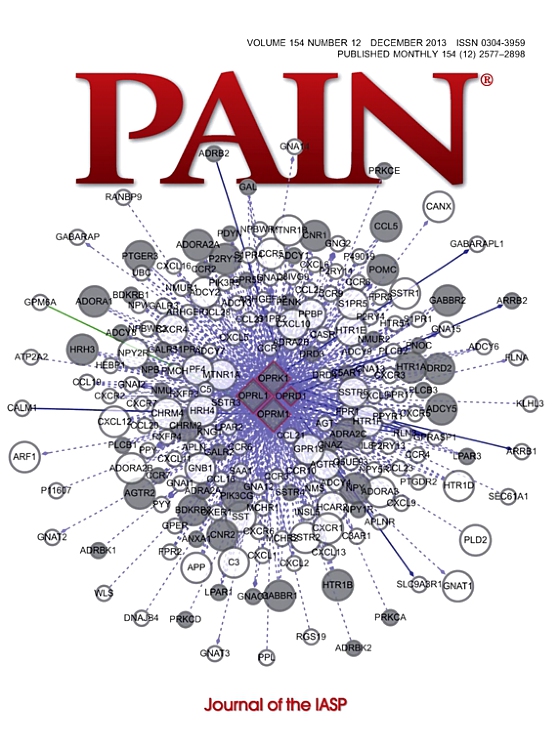Clinical features and functional analysis of novel SCN9A variants causing congenital insensitivity to pain.
IF 5.9
1区 医学
Q1 ANESTHESIOLOGY
引用次数: 0
Abstract
Pain perception is a fundamental protective mechanism that enables us to detect noxious stimuli. With a focus on finding treatments for pain, the molecular mechanisms and key players involved in pain perception are currently under intense study. Congenital insensitivity to pain is one of the rarest and most unusual pain disorders. One of the reasons of pure congenital absence of pain are pathogenic variants in the SCN9A gene, which encodes the α-subunit of the Nav1.7 voltage-gated sodium channel. To date, most of the described variants in SCN9A associated with congenital insensitivity to pain are biallelic frameshifting variants, and the extent to which splice-affecting variants contribute to this rare phenotype remains largely unknown. Here, we describe 4 novel variants in previously unreported patients with congenital insensitivity to pain, all carrying noncoding variants in a homozygous or compound-heterozygous state in the SCN9A gene. Functional analyses demonstrated that all variants affect mRNA splicing, leading to both out-of-frame and in-frame isoforms. In 1 case, a deep-intronic variant detected through whole-genome sequencing led to the inclusion of a pseudoexon in intron 9. Genotype-phenotype analysis did not reveal significant differences in phenotype severity among the patients, suggesting that in-frame shortening of the Nav1.7 protein completely disrupts its function. These findings broaden the understanding of SCN9A-related pain insensitivity and uncover the molecular mechanisms of novel noncoding variants in the SCN9A gene, which is crucial for the development of future tailored therapeutic approaches.导致先天性疼痛不敏感的新型SCN9A变异的临床特征和功能分析。
痛觉是一种基本的保护机制,它使我们能够检测到有害的刺激。随着人们对疼痛治疗方法的关注,疼痛感知的分子机制和关键参与者目前正处于激烈的研究之中。先天性疼痛不敏感是最罕见和最不寻常的疼痛疾病之一。单纯先天性无疼痛的原因之一是SCN9A基因的致病变异,该基因编码Nav1.7电压门控钠通道的α-亚基。迄今为止,大多数与先天性疼痛不敏感相关的SCN9A变异都是双等位移框变异,而影响剪接的变异在多大程度上导致了这种罕见的表型仍然很大程度上未知。在这里,我们在以前未报道的先天性疼痛不敏感患者中描述了4种新的变异,它们都携带SCN9A基因纯合或复合杂合状态的非编码变异。功能分析表明,所有变异都会影响mRNA剪接,导致框外和框内异构体。在1例中,通过全基因组测序检测到的深内含子变异导致在内含子9中包含假外显子。基因型-表型分析未发现患者表型严重程度的显著差异,提示帧内缩短的Nav1.7蛋白完全破坏了其功能。这些发现拓宽了对SCN9A相关疼痛不敏感的理解,揭示了SCN9A基因中新的非编码变异的分子机制,这对未来定制治疗方法的发展至关重要。
本文章由计算机程序翻译,如有差异,请以英文原文为准。
求助全文
约1分钟内获得全文
求助全文
来源期刊

PAIN®
医学-临床神经学
CiteScore
12.50
自引率
8.10%
发文量
242
审稿时长
9 months
期刊介绍:
PAIN® is the official publication of the International Association for the Study of Pain and publishes original research on the nature,mechanisms and treatment of pain.PAIN® provides a forum for the dissemination of research in the basic and clinical sciences of multidisciplinary interest.
 求助内容:
求助内容: 应助结果提醒方式:
应助结果提醒方式:


